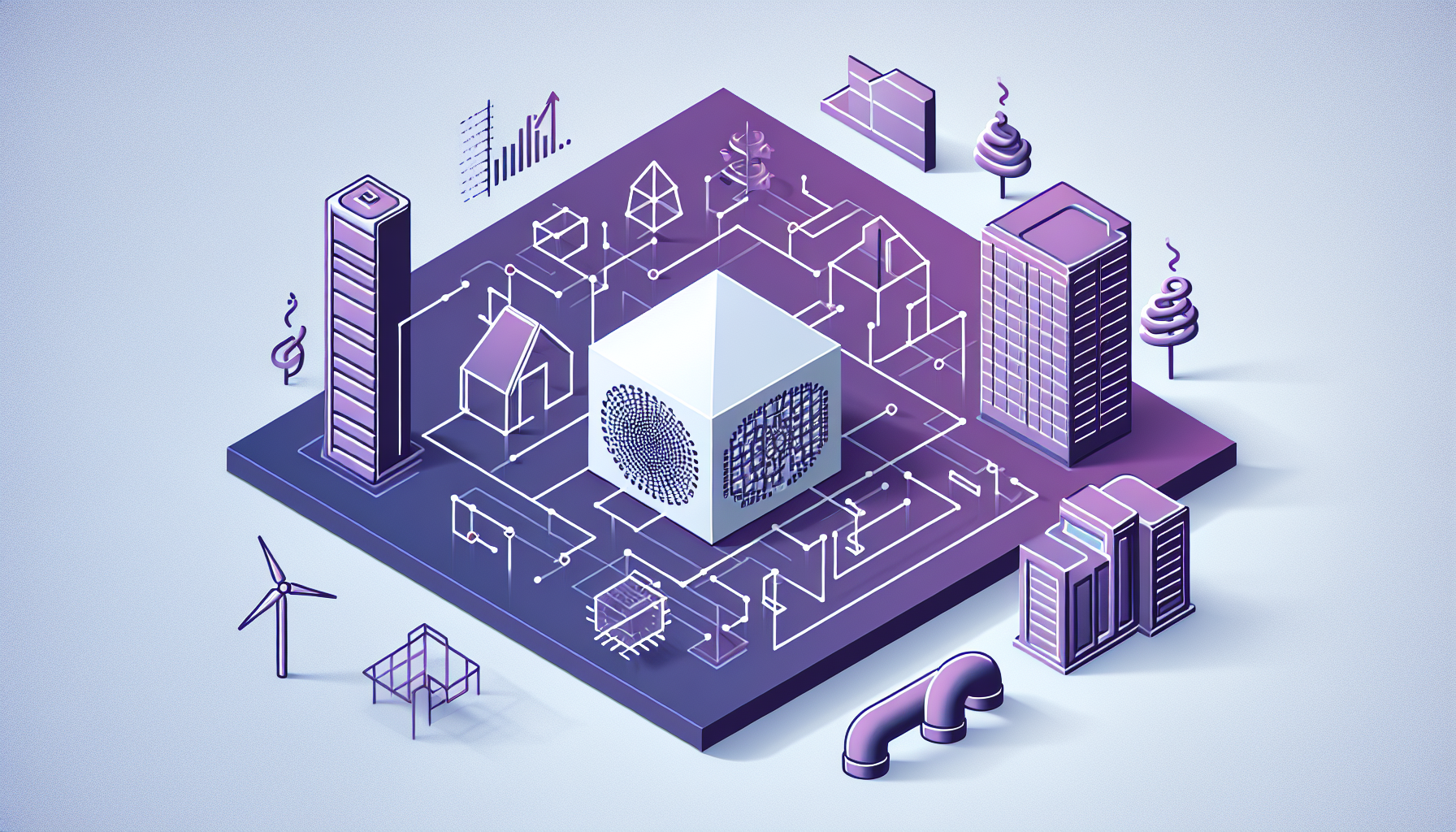Using cloud-based tools can make your HVAC design team more productive. These tools offer a place for real-time teamwork. They make sharing information and managing projects easy.
Cloud collaboration software changes how teams work together from anywhere. You can access everything through websites, mobile apps, or desktop programs. This makes managing your HVAC design projects more efficient.
In 2021, cloud spending was $410 billion and is expected to reach $600 billion by 2023. By 2025, 85% of companies will use cloud-first strategies. This shows how important cloud tools are becoming in HVAC design and project management.
Understanding Cloud-Based HVAC Software
Cloud-based HVAC software changes how you handle heating, ventilation, and air conditioning systems. This new tech lets you control your HVAC systems easily, making them more accessible and efficient.
What is cloud-based HVAC software?
Cloud-based HVAC software is a digital platform that stores and handles HVAC data on remote servers. You can watch and tweak your HVAC systems from anywhere with internet. This tech cuts down on maintenance costs and boosts flexibility by not needing on-site servers.
Benefits of cloud-based HVAC solutions
Cloud-based HVAC solutions bring many benefits:
- Less energy used
- Smarter maintenance plans
- Better access to systems
- Control and monitor in real-time
- Deeper data analysis
Key features of online HVAC tools
Online HVAC tools have features to make your work easier:
| Feature | Description | Benefit |
|---|---|---|
| Remote Access | Control HVAC systems from any device | More flexibility and quick response |
| Integrated Workflows | Make processes smoother across departments | Better efficiency and teamwork |
| Scalability | Grow with your business easily | Keep your HVAC management ready for the future |
| Advanced Analytics | Understand complex data better | Make choices based on data |
| Predictive Maintenance | Stop problems before they start | Less downtime and lower repair costs |
Using these features, HVAC management systems help you use energy wisely, improve system performance, and lead in the HVAC industry.
The Digital Transformation of HVAC Management
The HVAC industry is changing fast, moving towards digital transformation. This shift is changing how companies handle their heating, ventilation, and air conditioning systems. Cloud-based systems are leading this change, offering new ways to keep an eye on, control, and improve operations.
Digital transformation in HVAC management has many benefits. It lets you watch system performance in real-time, making it easier to fix problems fast. Cloud-based systems also let technicians check and fix issues from anywhere, which means quicker repairs and less downtime.
Smart building technologies are coming from HVAC industry innovation. These systems use sensors and data to make energy use better, cutting costs. They can change temperature and airflow based on how many people are there and the weather outside.
| Traditional HVAC Management | Cloud-Based HVAC Management |
|---|---|
| Manual monitoring | Real-time automated monitoring |
| On-site diagnostics | Remote diagnostics |
| Reactive maintenance | Predictive maintenance |
| Fixed schedules | Dynamic, data-driven scheduling |
Cloud-based systems are changing the HVAC industry. These platforms bring together different parts of HVAC operations, like maintenance schedules and energy use analysis. This helps businesses make better decisions and work more efficiently.
Enhance Team Productivity with Cloud-Based Collaboration Tools
Cloud-based collaboration tools change the game for HVAC design teams. They make work flow better, improve talking between team members, and help make decisions with data. Let’s see how these tools change HVAC team work.
Streamlining Workflows with Cloud-Based Platforms
These tools bring together important tasks like scheduling, keeping track of inventory, and tracking projects in one place online. This means no more juggling different software, making things simpler and more efficient. HVAC teams can check work orders, client info, and project details from any device, anywhere.
Improving Communication and Coordination
Tools with real-time chat, video calls, and shared boards make team work smoother. This helps avoid mix-ups and speeds up solving problems, making projects finish faster.
Leveraging Real-Time Data for Decision-Making
Cloud tools for HVAC design give teams real-time data. They can see the latest on project status, how resources are used, and performance numbers. This quick access to important data lets managers make smart choices fast, using resources better and improving project results.
| Aspect | Before Cloud Collaboration | After Cloud Collaboration |
|---|---|---|
| Workflow Efficiency | Manual processes, multiple systems | Streamlined, integrated platform |
| Communication Speed | Delayed, often fragmented | Real-time, centralized |
| Data Accessibility | Limited, often siloed | Universal, real-time access |
Using cloud collaboration tools, HVAC design teams can really step up their productivity. These platforms create a single space for easy teamwork. This lets teams work smarter and finish projects faster.
Remote Management and Monitoring in HVAC Systems
Cloud-based technology has changed how we manage HVAC systems. Now, you can control and check on systems from anywhere. This brings flexibility and efficiency to businesses, changing how they handle heating, ventilation, and air conditioning.
With cloud-based monitoring, you get real-time data on system performance and energy use. You also see potential issues early. This lets you make quick decisions and do maintenance before problems start, cutting downtime and making equipment last longer.
Remote management makes HVAC system optimization easy. You can change settings and save energy without being there. This leads to big cost savings and better comfort for people in buildings.
| Feature | Benefit |
|---|---|
| Real-time monitoring | Instant issue detection |
| Remote adjustments | Improved energy efficiency |
| Data analytics | Informed decision-making |
| Automated alerts | Faster response times |
By using remote HVAC management and cloud-based monitoring, you’re not just upgrading your systems. You’re making sure your HVAC operations are ready for the future. You can improve performance, cut energy waste, and respond fast to problems. This turns your HVAC system into a smart, efficient, and cost-effective tool.
Integrating Cloud-Based Tools into HVAC Design Processes
Using cloud-based tools in HVAC design can change the game. These tools make working together easier, give you real-time data, and boost efficiency. Let’s see how to add these tools to your current systems smoothly.
Implementing Cloud Solutions in Existing Workflows
First, pick areas in your HVAC design that could use cloud tools. This could be project management, design software, or tools for analyzing data. Then, slowly bring in cloud-based options to ease the change. Make a plan to help everyone switch smoothly from old to new.
Training Team Members on New Cloud-Based Tools
Training your team well is key to using the cloud successfully. Create a detailed training program with hands-on sessions, video tutorials, and guides. Encourage team members to learn from each other to work better together and adopt the new tools faster.
Overcoming Resistance to Technological Change
Change can be tough, but it’s important for growth. Face concerns by showing how cloud tools make things easier, more accurate, and quicker. Offer ongoing support and celebrate small victories to build trust in the new systems. Remember, be patient and keep trying when introducing new tech to your HVAC design.
By focusing on these areas, you’re on your way to using cloud tools in your HVAC design workflows. This leads to a more efficient, team-focused, and innovative approach to HVAC design. You’ll stay ahead in your field.
Optimizing Energy Efficiency with Cloud-Based HVAC Tools
Cloud-based HVAC tools are changing how we manage energy in buildings. They use advanced tech to study how much energy we use and find ways to use less. With these systems, you can cut down on energy waste and lower costs.

Real-time monitoring is a big part of these tools. They keep an eye on energy use all the time. This lets you make quick changes to keep things running smoothly. By doing this, you can save a lot of energy and help the environment.
These tools use advanced analytics and machine learning. They look at lots of data to find ways to use less energy. By following their advice, you can make your building use energy more efficiently.
| Benefits of Cloud-Based HVAC Tools | Impact on Energy Efficiency |
|---|---|
| Real-time monitoring | Immediate adjustment of HVAC operations |
| Advanced analytics | Identification of energy-saving opportunities |
| Machine learning algorithms | Predictive maintenance and optimization |
| Remote access | Quick response to energy consumption issues |
Using cloud-based HVAC tools means you’re not just saving energy; you’re also getting ready for the future. These systems change with your needs, keeping your HVAC efficient. With these tools, you’re ready to tackle the challenges of making buildings more sustainable.
Enhancing Customer Service through Cloud Collaboration
Cloud collaboration changes how HVAC companies serve their customers. It uses cloud tools to make clients happier and operations smoother. Let’s see how these technologies change service and client relationships.
Improving Response Times and Issue Resolution
Cloud systems help HVAC teams answer client needs fast. They give technicians quick access to customer info and past service details. This means they can fix problems quicker, making clients happier.
Providing Clients with Real-Time Project Updates
Real-time updates keep clients in the loop during HVAC projects. Cloud platforms let teams share updates, photos, and timelines right away. This openness builds trust and lowers client worries about their projects.
Facilitating Better Communication Between Teams and Clients
Cloud tools make talking to clients better by offering a single place for all project talks. Clients can easily ask questions or share concerns, and teams can answer quickly. This smooth talk helps build stronger client relationships and better customer service.
| Benefit | Impact on Customer Service |
|---|---|
| Quick Access to Data | Faster issue resolution |
| Real-Time Updates | Increased client satisfaction |
| Centralized Communication | Improved client-team relationships |
By using cloud collaboration, HVAC companies can greatly improve their customer service. These tools make things more efficient and create a clear, quick way for clients to get updates. This leads to happy customers and successful businesses.
Security Considerations in Cloud-Based HVAC Collaboration

Cloud-based HVAC collaboration offers many benefits but also brings new security challenges. It’s important to focus on protecting data and keeping HVAC systems safe. This ensures sensitive information stays secure and systems work well.
Using strong cloud security is key. This means encrypting data when it moves and when it’s stored. Adding multi-factor authentication helps too. It makes sure only the right people can get into your HVAC systems and see your data.
Doing regular security checks is also crucial. These checks help spot and fix weak spots. They keep your cloud-based HVAC safe from threats.
Employee Training and Best Practices
Your team is the first line of defense against cyber threats. Make sure they know how to stay safe online. Teach them about:
- Spotting phishing attempts
- Creating strong passwords
- Handling sensitive data right
- Why software updates are important
Keep up with the latest threats to HVAC systems. Update your security steps and software as needed. This way, you can keep your cloud-based HVAC tools safe from new cyber dangers.
Putting cloud security and data protection first lets you enjoy cloud-based HVAC collaboration safely. This way, you can keep your systems and data safe from risks.
Future Trends in Cloud-Based HVAC Design and Management
The HVAC industry is on the verge of a big change. Cloud-based solutions are making systems smarter and more efficient. Let’s look at the exciting changes coming to HVAC design and management.
Artificial Intelligence and Machine Learning Integration
AI in HVAC is changing how systems work. Smart algorithms look at data from sensors and adjust temperature and airflow on the spot. This makes for better comfort and saves energy. Machine learning models also predict how much energy we’ll use, making systems work better over time.
Internet of Things (IoT) and Smart HVAC Systems
IoT HVAC systems connect different parts together. Sensors talk to central hubs for precise control. Smart thermostats learn what we like and adjust settings for us. Managers can control many systems from one place.
Predictive Maintenance and Analytics
Predictive maintenance is changing how we take care of HVAC systems. Advanced analytics spot problems before they start. This way, we can fix things before they break down, saving time and money. Cloud tools send alerts in real-time, so we can act fast.
| Technology | Benefits | Challenges |
|---|---|---|
| AI in HVAC | Enhanced efficiency, Personalized comfort | Initial setup costs, Data privacy concerns |
| IoT HVAC Systems | Remote monitoring, Improved control | Cybersecurity risks, Integration complexity |
| Predictive Maintenance | Reduced downtime, Extended equipment life | Data accuracy, Staff training requirements |
As these technologies get better, we’ll see HVAC systems that are more integrated, efficient, and easy to use. The future of cloud-based HVAC looks bright, with better comfort, lower costs, and more sustainability.
Conclusion
Cloud-based collaboration tools are changing the HVAC industry. They make teams work better together, use energy more efficiently, and improve how they serve customers. As companies move to the cloud, these tools become vital for designing, managing, and maintaining tasks.
Cloud collaboration in HVAC has many benefits. Teams can work together from anywhere, sharing data and insights in real time. This leads to quicker fixes and projects done faster. For clients, it means getting help faster and clear updates on projects.
The future of HVAC looks bright. With smart systems using cloud tech, AI, and the Internet of Things, performance will soar. These technologies aim to use energy better, predict when things need fixing, and give users a better experience. As the HVAC industry changes, keeping up with cloud tools will be crucial to stay ahead and meet new customer needs.





0 Comments